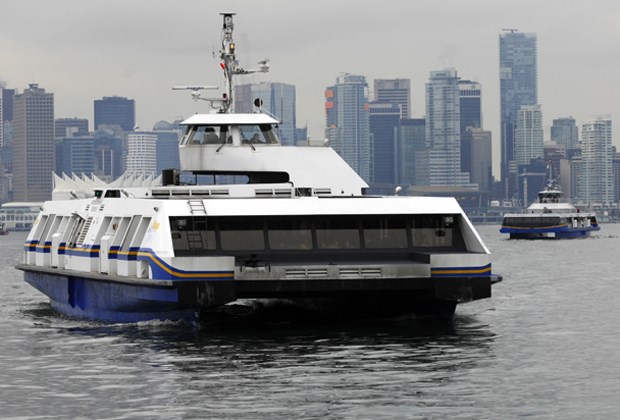Starting Oct. 5, taking the bus downtown from anywhere on the North Shore will only cost $2.75 as TransLink eliminates its zone system, but transferring to SeaBus and SkyTrain will remain full price.
Cathy McLay, TransLink’s chief financial officer, made the announcement on Thursday. The move represents a step forward in getting the long-delayed fare gates and Compass Card system online.
But it will also have the effect of making travelling by SeaBus more expensive than taking the bus from the North Shore.
Paper Compass tickets will soon be available from the vending machine gathering dust at the SeaBus terminal and by the end of October, transit users will be able to buy and electronically load their Compass Cards to get through fare gates, which also currently sit dormant.
Commuters transferring from a bus to SkyTrain, SeaBus or West Coast Express will have to pay an additional fare.
Central Lonsdale resident Sarah Lawley-Wakelin said she will likely switch to taking the 240 bus downtown each morning as a result of the cheaper fare.
“I do like the SeaBus more because I find it more reliable and less crowded but I buy a monthly pass and so I’m going to be saving about $30 a month,” she said.
Lawley-Wakelin said she will simply have to brace for a more crowded commute.
“If I wait to 7:41 a.m., it starts getting insane and I’m on the third stop from the beginning and it’s already maxed,” she said.
The fare gate and smartcard system, imposed by former transportation minister Kevin Falcon in 2007, has been tested for months, but the component requiring users to “tap out” as they leave buses was reported to be too slow and cumbersome.
Users who failed to tap out would be automatically charged as if they crossed three zones. By eliminating the zone system, there is no longer a need to tap out.
McLay could not say how much revenue TransLink would lose by scrapping the zone system for buses but she expected it would mean more people tapping in and paying fares.
“We think, by offering the one-zone on buses, it will increase ridership and on net, we think it will all balance out,” she said.
The Compass system was intended to give real-time data on transit usage. Even without the tap-out function, they’ll “be able to monitor that and adjust the bus service accordingly,” McLay said.
“Unfortunately, with the No plebiscite, there is no increase in transit services,” she added.
There are no immediate plans to hike the one-zone fare, McLay said, although the Compass system should ideally provide enough data to help TransLink plan for future changes in the fare system.
West Vancouver Mayor Michael Smith, a frequent critic of TransLink, said on its face, the change is a good deal for West Vancouver transit users, but the lack of financial planning by TransLink baffles him.
“How can you make a business decision when you don’t know what your costs are going to be? The mind boggles,” he said.
The organization has long been trying to encourage people to take the SeaBus and SkyTrain and “now their pricing policy is doing the opposite,” he added.



